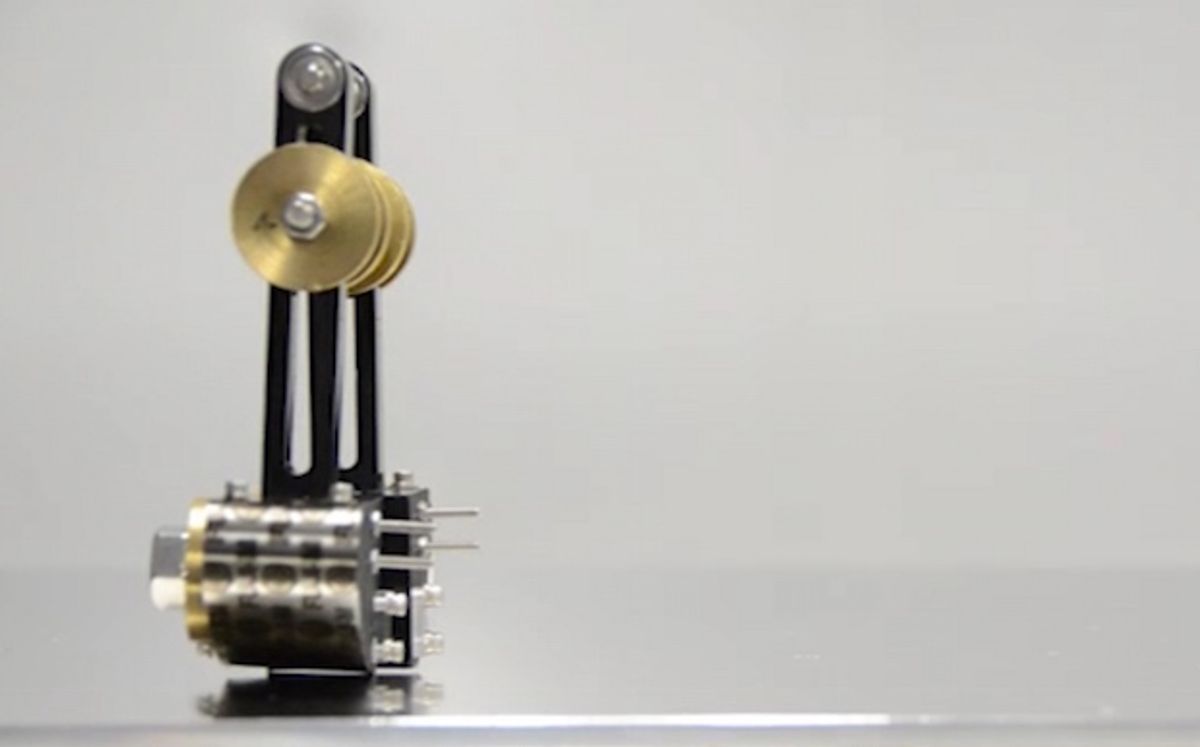A bimetal consists of two different kinds of metal stuck together. Bimetals are different than alloys, where the two metals are blended; in a bimetal, the two metals are just layered on top of each other. The reason to do this is to take advantage of the different characteristics of different metals when they’re heated: they expand at different rates, causing your piece of bimetal to deform until it cools off again. Essentially, a bimetal is a way to convert heat directly into mechanical energy, and researchers at the University of Tokyo have come up with a way to leverage this to get a robot to walk. The robot has no sensors and no actuators, and as long as it’s got a hot surface to walk on, it can keep going pretty much forever.
The trick to this is a combination of two things. First, Thermobot’s feet are heavily weighted at the backs, meaning that when the bimetal on one foot deforms and the robot rocks sideways, the foot swings forward. At the same time, the weights on Thermobot’s legs control the distance that the robot tips laterally. If everything is calibrated properly, Thermobot will tip back onto the swinging foot when it’s ahead of the body, and the robot has taken a step.
It’s important to note that this technique won’t work in an environment that’s hot overall: the surface has to be significantly hotter (50 degrees Celsius, ideally) than the rest of the environment in order to give the bimetal a chance to cool, so the cycle can repeat itself. In this particular case, Thermobot is walking on a hot plate that’s 170 degrees C in a 26 degree room. However, it doesn’t matter that much what the absolute temperatures are, just that there’s a significant relative difference between them, meaning that Thermobot is quite happy to walk in 300 degrees C temperatures as long as the surface is hotter than ambient.
This is certainly one of the more novel walking techniques we’ve ever seen, especially since it’s completely passive, able to walk on a level surface by harvesting heat. We have to admit, though, that no practical applications immediately leap to mind. The researchers say that they’re working on combinations of metals that will allow Thermobot to operate at much lower temperatures, perhaps even safe temperatures, and that it might make for a pretty cool toy. They’re also going to be working on “other locomotion mechanisms that can be realized using the self-oscillation of bimetal sheets,” meaning that we could see more creative robots making use of this tech in the near future.
“Thermobot: A Bipedal Walker Driven by Constant Heating,” by Takeru Nemoto and Akio Yamamoto from The University of Tokyo, was presented this week at IROS 2015 in Hamburg, Germany.
Evan Ackerman is a senior editor at IEEE Spectrum. Since 2007, he has written over 6,000 articles on robotics and technology. He has a degree in Martian geology and is excellent at playing bagpipes.




